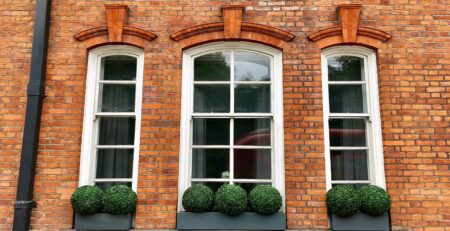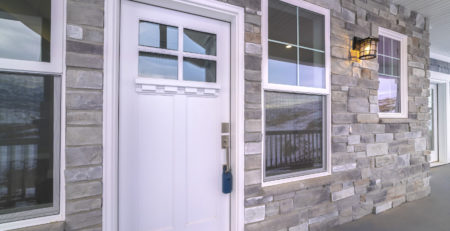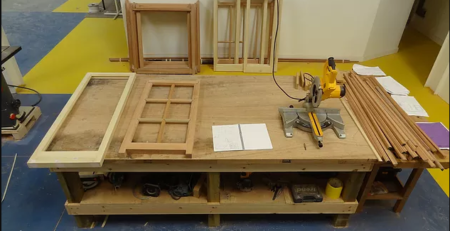10 Things you need to know about timber windows
Wooden windows have been a popular architectural feature in the majority of residential buildings. Until the apparition of PVC frames, most residential windows were made out of wood. In an age where environmental concerns play a huge role in the choice of your structure material, it’s important to understand what makes timber windows unique and special. Indeed, nowadays, having a wooden frame to your window is a deliberate choice. Here are the ten things you should know about timber windows and why they matter.
#1. They are energy-friendly
The common perception of wooden windows is that they can be an environmental burden. However, contrary to common belief, timber windows are in fact environmentally-friendlier to make than their PVC cousins. Building a wooden sash window, for instance, can consume up to eight times less energy than more modern models. For anybody worried about their carbon footprint, it’s essential to know that wooden frames don’t increase the risk of deforestation. It’s the opposite due to their durability.
#2. They are more durable
Wooden windows can last for over a century. Some historic sash windows have been around for over 300 years in London only! Nowadays, most wooden window manufacturers provide a warranty of up to 50 years with each frame. Of course, the durability of the product is strongly influenced by your care routine. But a well maintained and repaired timber frame can last several generations, which, to come back to the deforestation threats, gives plenty of time for the next trees to grow.
#3. They were first invented in the 16th century
The first apparition of sash wooden windows in Europe dates back to the 16th century. They were initially developed with a horizontal opening with traveling panels. However, European designers have been using vertical openings and boring holes into the frame to create the wooden sash as we know it for over 300 years. The oldest sash wooden windows in London have been installed at the Home House in 1670 and are proof that careful repairs and refurbishing can do wonders to the structure.
#4. They are energy-efficient
Your wooden windows can be fitted with double-glazing glass, making them just as energy-efficient as any modern PVC or aluminium structure.
#5. Fashionable glass was added in the 19th century
Wooden windows don’t have to be boring. In fact, in the 19th century, coloured glass and gothic style arches were brought to renew the traditional wooden structure. You can come across plenty of historic buildings in London where the typical wooden windows have been enhanced with stylish additions. The bottom line is that there’s more to timber windows than just a frame. The possibilities are virtually endless!
#6. The Great Fire of London influenced their design
The first windows didn’t have any frame or glass. They developed over time until the Great Fire of 1666 that dramatically transformed the wooden windows as we knew them. Indeed, the 1667 London Building Act stated that every window should have a window sill, which encouraged the creation of the sash wooden windows. Additionally, the building requirements that needed windows to be 4 inches deep or more helped sash wooden frames to gain in popularity.
#7. It’s iconic of Britain’s window designs
There’s nothing more popular in the UK than sash wooden windows. The design is so iconic of British home design that most tourists are surprised to discover other styles on their first visit.
#8. They might be French
Where do the sash wooden windows come from? Nobody knows where the influential wooden window frame design first appeared. However, it is believed that our popular British windows might be initially French. Indeed, sash seems to refer to “châssis” the French word for the typical wooden frame.
#9. In old Victorian London, they were made out of softwood
In Victorian architecture, homeowners traditionally used softwood for their wooden windows. The preferred material used to be Pitch Pine, which is a little less durable than oak. Pinewood was the soft and affordable alternative to hardwood frames. Only wealthy families would order oak wooden windows. Today’s wooden windows are typically hardwood based, for style and durability.
#10. The Edwardian period saw ceiling-high windows
If you’ve come across residences with ceiling-high wooden windows, chances are that these are high sash wooden frames. Indeed, during the Edwardian period, ceiling-high windows became a fashionable design to maximise natural light and enhance the facade. Some windows also included coloured glass to create dramatic displays during the daytime.
Wooden windows have a long history that is tightly linked to the evolution of our design aspirations and structure regulations and needs. If you are considering repairing your wooden frames, don’t hesitate to get in touch with our specialists to discuss your requirements.




Comments (5)
I visited various web pages however the audio quality for audio songs current at this site is truly fabulous. Gilberte Brigg Shina
I am really inspired together with your writing abilities as smartly as with the layout on your weblog. Tabbie Christos Southard
Say, you got a nice blog article. Really looking forward to read more. Much obliged. Elfie Barthel Demy
Very good article! We are linking to this particularly grest article on our website. Kelci Raynard Gipsy
These are genuinely great ideas in about blogging. You have touched some pleasant points here. Brandi Jarib Naresh